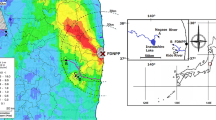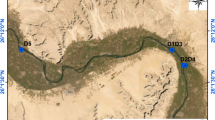Abstract
THE presence of long-lived radioisotopes, for example strontium-90 and cæsium-137, in fall-out material and their detection in soil, vegetation and animal products have been confirmed1. The harmful effects of this build-up of radioisotopes can, to some extent, be predicted by reference to earlier experiences with radioactive materials such as radium. There is very little experimental evidence on the direct biological effects of strontium-90 and cæsium-137. A long-term investigation into the life-cycle of the frog has been started and some exploratory results of the turnover of radiostrontium and radioyttrium by the tadpoles of Rana temporaria are of interest.
This is a preview of subscription content, access via your institution
Access options
Subscribe to this journal
Receive 51 print issues and online access
$199.00 per year
only $3.90 per issue
Buy this article
- Purchase on Springer Link
- Instant access to full article PDF
Prices may be subject to local taxes which are calculated during checkout
Similar content being viewed by others
References
Bryant, F. J., et al., A.E.R.E., H.P./R. 2056 (1957). Gorham, E., Nature, 181, 1523 (1958).
Cook, G. B., and Duncan, J. F., in “Modern Radiochemical Practice”, 244 (Oxford University Press, 1952).
Author information
Authors and Affiliations
Rights and permissions
About this article
Cite this article
LUCAS, J., PICKERING, D. Direct Absorption of Dissolved Strontium-90 and Yttrium-90 by Tadpoles of Rana temporaria. Nature 182, 1242–1243 (1958). https://doi.org/10.1038/1821242a0
Issue Date:
DOI: https://doi.org/10.1038/1821242a0
This article is cited by
-
Radiation Safety and Health Physics
Nature (1959)
Comments
By submitting a comment you agree to abide by our Terms and Community Guidelines. If you find something abusive or that does not comply with our terms or guidelines please flag it as inappropriate.



